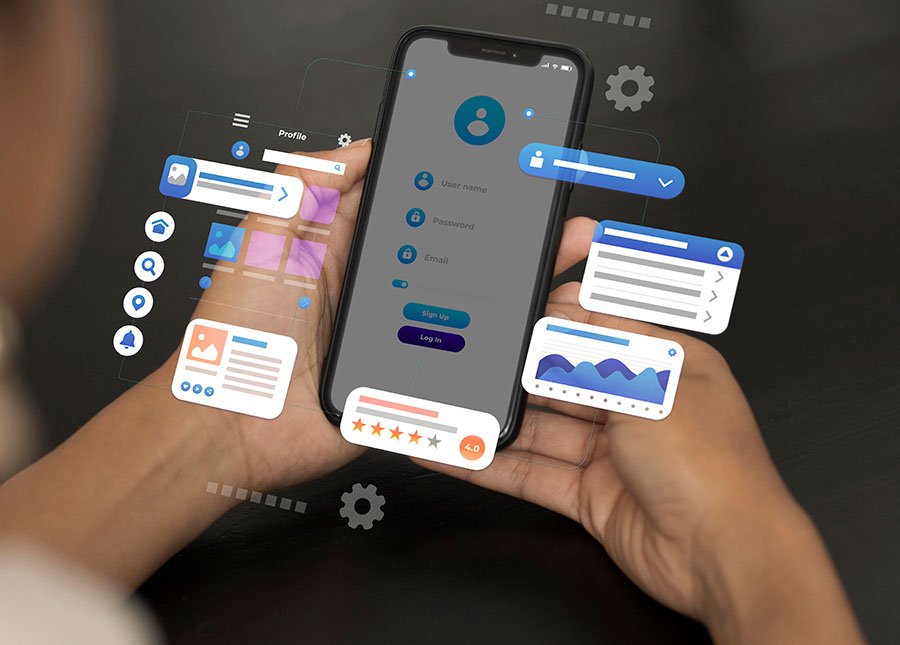
Optimizing App Performance
In the dynamic landscape of mobile app development, creating an application that not only functions seamlessly but also delivers optimal performance is paramount. Users expect swift responsiveness and smooth interactions, making app performance a critical factor in user satisfaction and retention. In this comprehensive guide, we’ll explore essential tips for Android and iOS developers to optimize app performance, ensuring a superior user experience.
Introduction: The Significance of App Performance Optimization
In a world where user expectations are continually on the rise, the performance of a mobile application can be a decisive factor in its success. Whether on Android or iOS, users demand swift load times, responsive interfaces, and efficient resource utilization. Optimizing app performance is not just a technical consideration; it directly impacts user engagement, reviews, and the overall success of an application in a competitive market.
Understanding the Performance Metrics: Key Indicators for Success
- Load Time OptimizationUsers are less patient than ever, and a slow-loading app can lead to frustration and abandonment. Learn how to streamline the loading process, minimize splash screen durations, and employ efficient caching strategies to reduce load times.
- Smooth User Interface (UI) InteractionsAchieving a buttery-smooth UI experience involves addressing issues like frame drops and laggy animations. Explore techniques such as hardware acceleration, thread management, and UI component optimizations for a seamless user interface.
- Memory ManagementEfficient memory management is crucial for preventing app crashes and sluggish performance. Dive into strategies for reducing memory leaks, optimizing memory allocation, and employing tools for effective garbage collection on both Android and iOS platforms.
Tips for Android App Performance Optimization
- Code Optimization for AndroidDelve into best practices for optimizing Java or Kotlin code, including efficient algorithm implementation, avoiding unnecessary object creation, and leveraging multithreading to enhance the responsiveness of Android apps.
- Image and Resource CompressionExplore techniques for compressing images and resources without compromising quality, reducing the overall size of the APK file and minimizing the impact on app performance.
- Background Task OptimizationAndroid apps often perform tasks in the background. Learn how to optimize background tasks, manage background threads effectively, and implement features like Job Scheduler for efficient resource utilization.
Tips for iOS App Performance Optimization
- Swift Code Optimization for iOSDiscover strategies for optimizing Swift code, including effective memory management, minimizing unnecessary computations, and leveraging Swift’s features for enhanced app performance on iOS devices.
- Asset Catalog OptimizationExplore how optimizing asset catalogs, including images and multimedia resources, can significantly improve the performance of iOS apps. Consider techniques such as image slicing and asset bundling.
- Multithreading and Grand Central Dispatch (GCD)Harness the power of multithreading using GCD to parallelize tasks and enhance the performance of iOS apps. Learn about thread safety and how to implement background tasks efficiently.
Cross-Platform Considerations
- Cross-Platform Development FrameworksFor developers engaged in cross-platform development, investigate the impact of frameworks like React Native or Flutter on app performance. Consider the trade-offs and strategies for optimizing performance in a cross-platform environment.
- Testing and Profiling ToolsUtilize testing and profiling tools available for both Android Studio and Xcode to identify performance bottlenecks, memory issues, and areas of improvement. Learn how to interpret performance metrics and make data-driven optimizations.
Conclusion: Elevating User Experience Through Performance Excellence
In conclusion, optimizing app performance is a continuous journey for developers seeking to provide a stellar user experience. Whether crafting applications for Android or iOS, the principles of efficient coding, resource management, and responsive design remain universal. By implementing the tips outlined in this guide, developers can enhance app performance, meet user expectations, and position their applications for success in a competitive and demanding mobile landscape.
Also Read This: COLOR PSYCHOLOGY IN BRANDING: CHOOSING HUES FOR IMPACT



